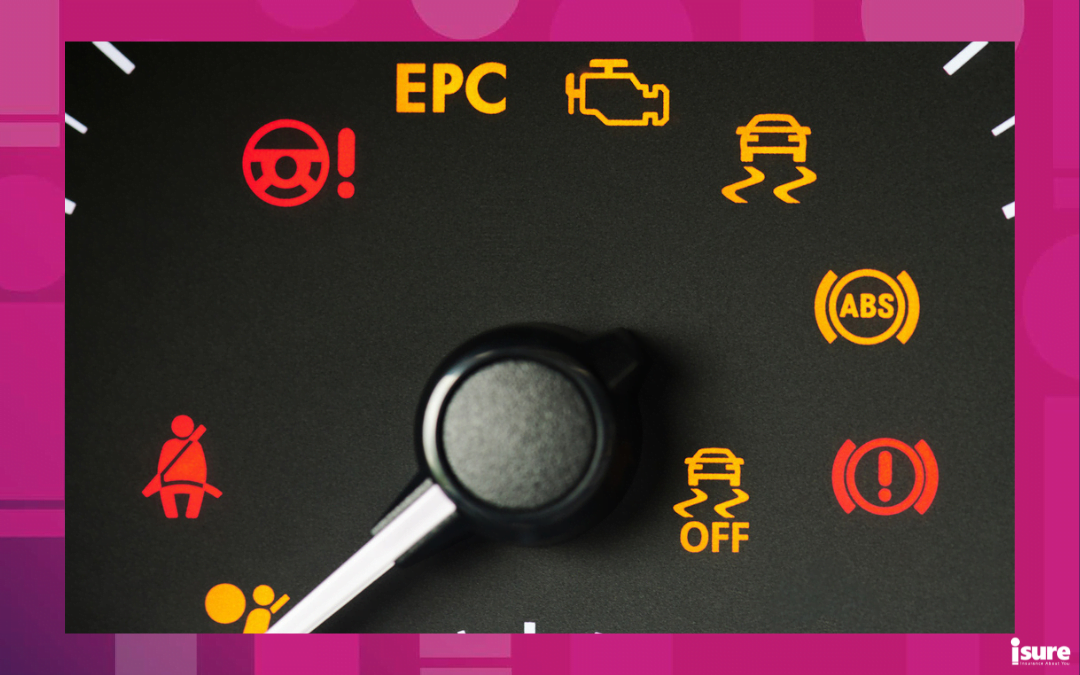Car safety features are an important consideration when choosing your next vehicle. The amount of mandatory safety features for vehicles has skyrocketed over the past few years. Park assist, pedestrian detection and Lane-Tracking Assist (LTA) are just a few aspects of safety technology available to improve road safety. On the flip side, with so many new options coming to market, knowing which ones are necessary and which are optional can be challenging. In this article, we highlight the basic safety features all vehicles require. We’ve got all you need to know about mandatory safety features for vehicles, required by law in Canada.
Types of safety systems
It’s important that you be aware of the safety technologies out there and how they work. Safety systems can be categorized into five groups:
- Standard Safety features
- Collision Prevention features
- Speed Control features
- Vision and Headlight Safety features
- “Other” Safety features
We will focus on #1, which is the standard safety features, below.
The government’s two most well-known auto safety arms are the NHTSA, National Highway Traffic Safety Administration (NHTSA), and the Insurance Institute for Highway Safety (IIHS).
What are considered mandatory safety features for vehicles in Canada?
All vehicles in Canada must meet guidelines set out by Canada Motor Vehicle Safety Standards (CMVSS). New vehicles come with these items. Some may have proprietary names used by each automaker, but no matter the name, all these systems work basically the same way. Here are the must have safety features in a car that are required, by law:
1. Airbags
Mandatory since 1999 for all Passenger Cars, Light Trucks, and Vans (Front Seat).
One of the first items that comes to mind when discussing mandatory safety features for vehicles are airbags. All vehicles should have an airbag in the steering wheel and on the passenger side of the dash, front seat-side airbags and curtain airbags over the side windows. Depending on the automaker and the vehicle, there may be more, This includes airbags for: the driver’s knee, in the passenger seat cushion, between the front seats, or in the sides of the rear seats. They aren’t perfect, but airbags do much more good than harm. IIHS found that front airbags reduce driver fatalities in frontal crashes by 29%, while reducing fatalities in front-seat passengers ages 13 and older by 32%.
2. Anti-Lock Brakes (ABS)
Mandatory since 2012 for All New Passenger Cars.
Anti-Lock Brakes, or ABS, are a requirement in every new vehicle sold in Canada. They prevent the wheels from locking up and causing a vehicle to slide if you need to slam on the brakes. ABS rapidly apply and release the brakes over and over, much faster than you can, to help stop your vehicle. However, the most significant benefit of ABS has to be that it allows you to retain steering control. Therefore, on cars with antilock brakes, push the brake pedal with all your might and concentrate on steering yourself out of trouble. Antilock brakes are a crucial component in traction control and Electronic Stability Control (detailed below).
3. Electronic Stability Control (ESC)
Mandatory since 2012 on All Passenger Cars.
Utilizing the ABS sensors and independent four–wheel braking, this feature determines where your vehicle is going in relation to the direction you are steering. For example, if the ESC detects a skid, it will apply the brake on specific wheels. Electronic stability control’s task is to keep the vehicle travelling in the direction you are already steering. More complex than either ABS or traction control, stability control relies on both to help achieve its mission.
4. Traction control
Mandatory since 2011 on All Passenger Cars.
Traction Control is part of the ESC system and it is just as it sounds; a system to maintain traction between your drive wheels and the surface beneath them. Taking advantage of the ABS sensors in each wheel, the traction-control computer reduces power (torque) to a particular drive wheel if it’s spinning faster than the rest of the wheels. Such wheel spin typically occurs on slippery surfaces, particularly in corners or when accelerating. At times, you will feel a little kick to the right or left as the system self-corrects.
5. Rearview camera
Mandatory since 2018 on All Passenger Cars, Light Trucks, and Vans.
These cameras are designed for backup safety and are only activated when you shift into reverse. Although very effective when backing into or out of a parking spot, it is invaluable for spotting pedestrians or other objects behind your vehicle. Most display the image in the centre screen, but on some vehicles, it may show up in the instrument cluster or in the rearview mirror. Rearview cameras are usually housed within a vehicle’s rear bumper, licence plate area, or the latch for the trunk lid or tailgate. While this is the bare minimum, many other features exist, such as including “dynamic” lines, sensors and 360-degree or “bird’s eye” cameras that show the entire area around the vehicle.
6. Child seat tethers
Mandatory since 2002 for All Passenger Cars.
In Canada, these mandatory tethers are officially known as CANFIX or Lower Universal Anchorage System (LUAS). Although, most people call them by their U.S. name of LATCH, i.e. Lower Anchors and Tethers for Children. They are attachment points for the tethers on child seats. All vehicles must have them, but some are easier to use than others. These devices must be installed on all vehicles, so it is a good idea to bring it with you when looking to buy a new vehicle.
7. Seat belts
Mandatory since 1968 for All Passenger Cars.
In 2015, Canada made a three-point seat belt one of its mandatory safety features for every seating position in your car. It is a combination lap and shoulder belt that latches with a single buckle. Today, we have seat belts in every seating position of every passenger vehicle. Many tout the three-point seat belt as the single most effective safety measure ever. NHTSA claims wearing a seat belt in the front seat of a car or truck cuts your risk of a fatal injury nearly in half.
In 2004, seat belts were not often worn regularly; many cited discomfort as the prime reason. Compliance today is much higher thanks to seatbelt pretensioners for making safety belts comfortable. These gadgets allow the seat belt to give us space as we naturally move but instantly cinch tight in a frontal impact. They also help settle us back into the seat in anticipation of an airbag deployment.
Did you know? Seat belts have been around since the 1930s, but didn’t become ‘fashionable’ until the early 1960s? Carmakers refused to include them for years, fearing the negative safety message that installing seat belts would send.
8. Mirrors
Standardized feature for vehicles since the 1930’s.
It’s almost impossible to imagine driving any vehicle without using some sort of mirror to help you. However, mirrors only became a mandatory safety feature in the 1930’s. Rearview mirrors came as standard features in all vehicles, and ten years later, the driver’s side mirror came into normal use. It’s interesting to note that the first vehicle arrived in Canada in 1866. Therefore, mirrors were optional for its owner for almost 65 years! By law, every motor vehicle, other than a motorcycle or moped, must be equipped with at least two rear-view mirrors. This means one solidly attached to the interior of the vehicle at the centre of the upper part of the windshield, and the other to the exterior of the vehicle on the left side.
Optional safety technologies that are not mandatory safety features
While there are numerous safety features available to add to the standard ones, we’ve highlighted a few here that aren’t standard, but are important enough that they should be.
Adaptive headlights
For the most part, traditional headlights are fixed – meaning they are pointed straight ahead. Some vehicles do have a self-levelling feature to compensate for heavy loads weighing down the rear end. However, standard headlights will still point straight ahead. Adaptive headlights, however, are capable of swivelling to some degree based on the direction the steering wheel is turning when cornering. Consequently, these headlights can illuminate the area to your right or left as you turn, providing better visibility.
Automatic Emergency Braking (AEB)
Often paired with Forward-Collision Warning, Automatic Emergency Braking relies on cameras, radar, sensors, or a combination of the three to identify objects in the vehicle’s path. That awareness turns into action if the system determines the potential for a collision. The action depends on the AEB system. Some systems will apply the brakes, bringing the vehicle to a complete stop, if necessary. Other systems will only slow the car until the driver activates the brake, which lessens the impact if the driver doesn’t react.
Adaptive Cruise Control (ACC)
Cars with Adaptive Cruise Control (ACC) used to be considered a luxury only featured in state-of-the-art vehicles. However, with technological advancements, ACC is now a common feature found in many different car models. Autobytel says this means Adaptive Cruise Control is now accessible to everyone, and even if your current vehicle doesn’t have ACC, you can always have it installed. ACC uses advanced sensory technology to determine your car’s speed in proximity to other vehicles or objects on or around the roadway. It applies moderate brakes and warning signals when a driver is getting too close to another car. Drivers can set the speed limit on the ACC so that they don’t exceed the speed limit, but when the sensory technology detects traffic or other unsafe conditions, it reduces the driver’s speed to adapt to them.
Do mandatory safety features on my vehicle lower my insurance costs?
Unfortunately, no. The purpose of mandatory safety features for vehicles is to help reduce your risk of accidents. Your overall vehicle safety rating will have an impact on lowering your policy costs. In some instances, advanced safety features can actually increase insurance premiums. As advanced safety technology relies on sensors and electronics to function, it is more expensive to repair. In the end, it may elevate the cost of a car insurance claim.
When it comes to the safety of you and your loved ones, be sure that your current vehicle has all the mandatory safety features legislated by the government in good working order. If you are considering a new vehicle, look for these features as a starting point when your walk into the dealership. Be sure to price out the additional features and factor it into your budget. Speak with one of our isure brokers for advice regarding your new or used car purchase. We may be able to find you some savings you weren’t aware you qualify for, leaving extra cash for those safety upgrades!




